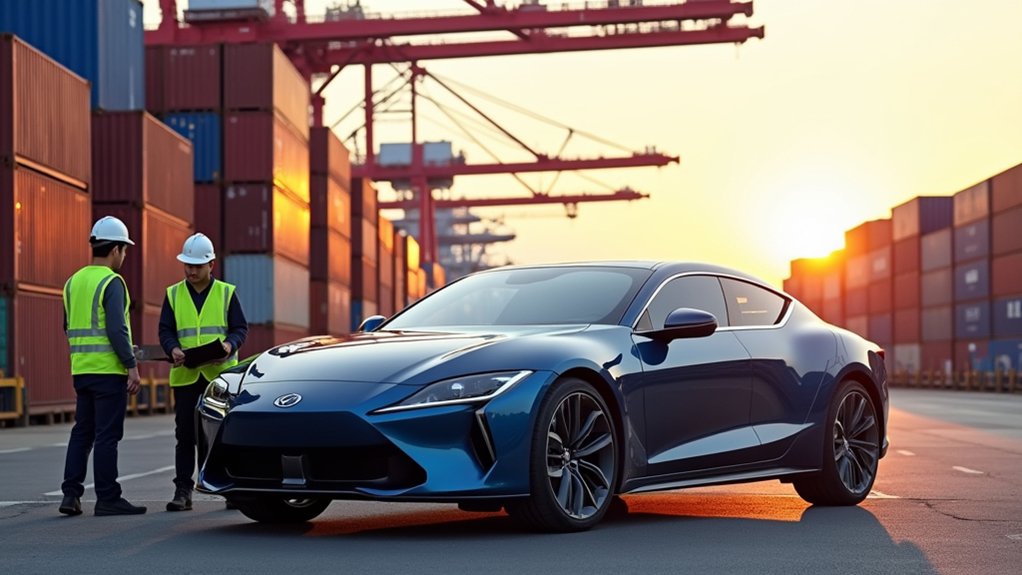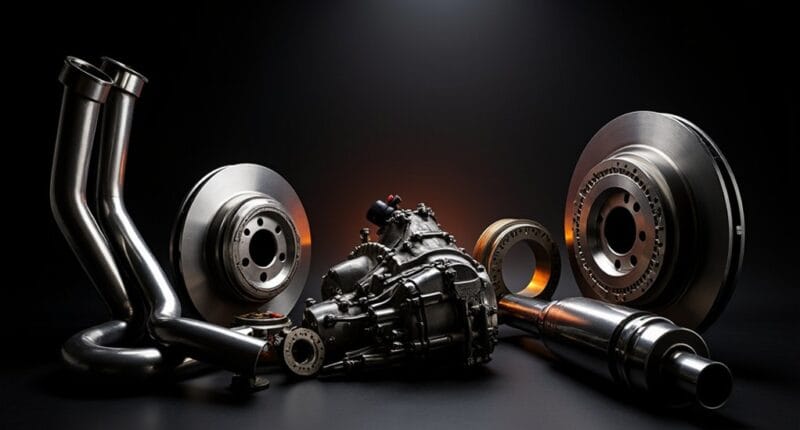Japan’s auto industry is getting hammered by U.S. tariffs – a brutal 25% tax on vehicles and parts. The impact? A staggering $8 billion annual hit on Japanese imports. Prime Minister Ishiba’s team is scrambling for solutions while repair shops watch parts prices soar. Toyota’s profits are tanking, down 35%. With another 24% tariff looming in July 2025, this trade war’s just warming up, and the real fireworks are yet to come.

How did two of the world’s largest economies end up in a bitter fight over car parts? It all started when the U.S. slapped a whopping 25% tariff on Japanese automotive imports, and then doubled down with another 25% duty on steel and aluminum. Talk about hitting your friends where it hurts.
The numbers are staggering. Japan ships $32 billion worth of auto parts to America yearly – that’s 18% of all U.S. parts imports. Now add an $8 billion annual tax thanks to these new tariffs. Japanese automakers are feeling the squeeze, with 1.5 million vehicles heading straight to U.S. shores each year, plus another 1.4 million sneaking in through Mexico and Canada. Repair shops are seeing dramatic price increases, with brake kit prices jumping from $400 to $500 for Mitsubishi OEM parts.
Japan’s massive auto trade with America takes a $40 billion hit as new tariffs reshape decades of established business relationships.
Japan’s government isn’t taking this lying down. They’re throwing diplomatic shade, calling the measures “extremely regrettable” – which in Japanese diplomatic speak is practically shouting. Prime Minister Ishiba has his ministers working overtime, while Chief Cabinet Secretary Hayashi and Industry Minister Muto are practically begging the U.S. to back off. Toyota projects a 35% profit decline this year as the tariffs continue to bite into earnings.
The negotiations are going about as smoothly as a rusty transmission. Talks kicked off in April 2025, but hit a wall at the G7 summit in June. Now everyone’s stuck in limbo, watching decades-old trade patterns unravel like a cheap sweater.
The real kicker? These tariffs are wreaking havoc on supply chains that took years to perfect. Japanese suppliers are scrambling to adapt, while U.S. importers are clutching their pearls over skyrocketing costs. It’s like watching a carefully choreographed dance suddenly turn into a mosh pit.
Come July 2025, another 24% tariff is set to kick in, because apparently, the current chaos isn’t enough. The only ones catching a break are parts with enough North American content and those destined for classic cars old enough to rent themselves out.
Meanwhile, both sides keep talking, but nobody’s walking away happy. Welcome to the world’s most expensive game of automotive chicken.





